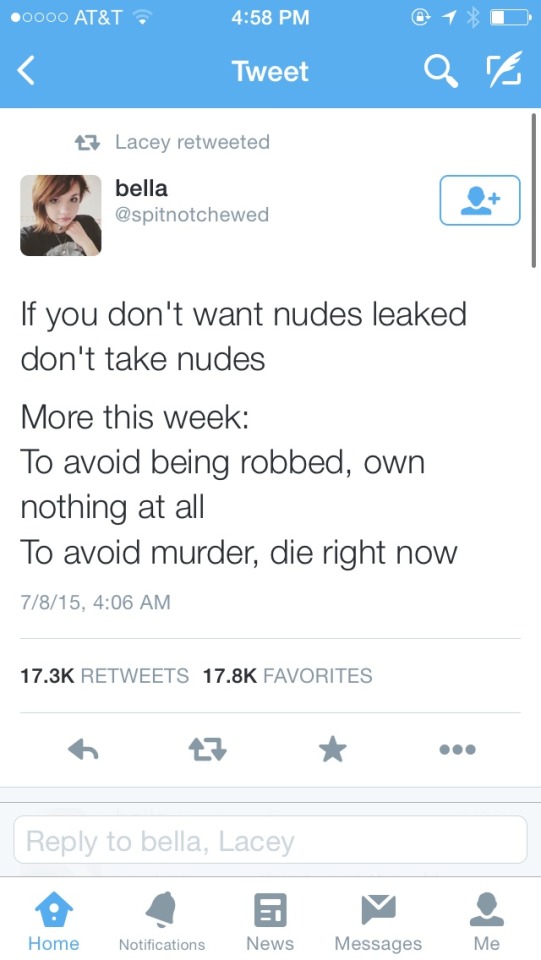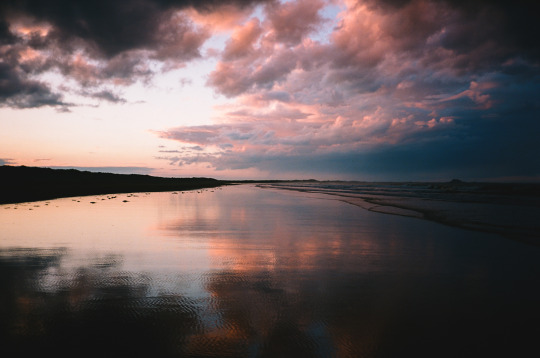www.madelinebushwrites.tumblr.com www.killersquirrels.tumblr.com mad uh Lynn.
Don't wanna be here? Send us removal request.
Text
If You’re Looking To Save The Planet, Start By Saving Its Predators

In the battle against climate change, one tactic is to improve how oceans and forests store harmful greenhouse gases. That’s because emissions like carbon dioxide can get into the atmosphere and drive up global temperatures.
Scientists call this tactic “carbon sequestration.” Oswald Schmitz, a professor of population and community ecology at the Yale School of Forestry and Environmental studies, says forests and oceans can be good at it.
But an environment’s ability to store carbon is only as strong its individual ecosystems. And the health of many ecosystems is directly related to the efficacy of its top predators. WNPR spoke with Schmitz about how conservationists can leverage predators to help keep carbon emissions in check.
When folks like me think about global warming we’re often thinking about plants or microbes and the role they play in capturing carbon emissions. But you’re saying, in addition to that, we probably should be thinking of animals and predators, too – why?
The reason why it matters – top predators and the impact they have on herbivores – is because the herbivores can change what they consume. It’s actually these multiplier effects that happen because one species is interacting with another and the effects of that propagate as you go down the food chain.

Pull out an example for me where we can talk about a specific predator and the impact it can have on an ecosystem – and how that can affect carbon emissions.
Wolves can prey on moose. And the moose, which normally eat vegetation, then have a changed impact on the vegetation. In a boreal system, for example, the boreal forest is a really important sink for carbon. Mainly because it’s a cold environment. As trees shed their bark, needles, and branches, – it just stays in the soil as organic matter. It’s slow to become decomposed because it’s a cool environment.
If herbivores are highly abundant, like moose or deer, they can eat up a lot of the vegetation, so it doesn’t end up in the soil. If you add wolves to that story, then wolves keep the moose populations in check – the moose eat less and so more of that biomass ends up in the soil. The wolves, by virtue of affecting what the moose do to the vegetation, can change how much carbon is actually stored in the boreal forest.
We have to be careful not to run with this idea yet. There’s a lot more science that needs to be done to really calculate how much carbon [gets sequestered] - and what the benefits are. But it’s certainly pointing to a huge untapped potential – in a sense, using animals as geoengineers - rather than relying solely on technology.

You gave the example in a paper you wrote for Yale Environment 360 about sea otters and the impact they’ve had on kelp forests. Talk a bit about that.
You’ve got kelp forests on the western sea coast running from southern United States all the way up into northern Alaska. In the absence of sea otters, sea urchins explode in abundance. Sea urchins are herbivores that eat up the kelp forests.
That was discovered sort of by accident because sea otters were over exploited in the fur trade. The loss of the sea otters led to a loss of kelp forests that could sequester the carbon.
People like Jim Estes actually discovered that [by] reintroducing sea otters, you actually saw luxuriant growth in the kelp forests. It’s the sea otters feeding on the sea urchins and lowering their abundance, which then lowered how much damage the urchins caused on the kelp forests.
This was one of the early examples showing top predators could even affect ecosystems, and it’s been the impetus for doing more and more work exploring the top predator effects in ecosystems.

How do you translate a finding like that to the conservation community? To get that message to them that while animals can be victims of climate change, they are also drivers of it …
I think part of the problem in conversation right now is we’ve focused on iconic species. Wildebeest. Sea otters. Lions. Tigers. We try to protect those, but we tend not to think about how they’re interdependent with other species as part of an ecosystem.
I think the fundamental message is that these species belong to something bigger. Conservation needs to move away from just thinking about protecting species to protecting the interdependence those species have with other species. Because that’s what keeps ecosystems resilient. It’s what protects those important services like carbon sequestration. So it’s shifting the mindset in conservation from one of thinking about species to one of thinking about the environmental services that come with a collection of species that are organized into a food chain.
This interview has been edited and condensed.
(Image Credits: National Park Service: Ken Conger, Neal Herbert / Creative Commons: Gregory Slobirdr Smith, kdee64)
3K notes
·
View notes
Text
Morning After Pill for HIV
I think that people forget that condoms protect you from more than just pregnancy.
And there is no morning after pill for HIV.
604K notes
·
View notes
Text
If you’re not going to lose sleep over me then what’s the point
5 notes
·
View notes
Text
people: omg how are you single????
me *internally*: because i have deeply rooted emotional issues and a debilitating fear that im not good enough for anything
me: guess I just haven’t caught my fiSH yet! haha reel one in for me if you find one, sharon!!
537K notes
·
View notes
Text
When bae lies to u but u have screenshots

400K notes
·
View notes
Photo
I really love this I love seeing mothers I miss mine a lot

I’ve got the whole world in my hands.
10K notes
·
View notes










